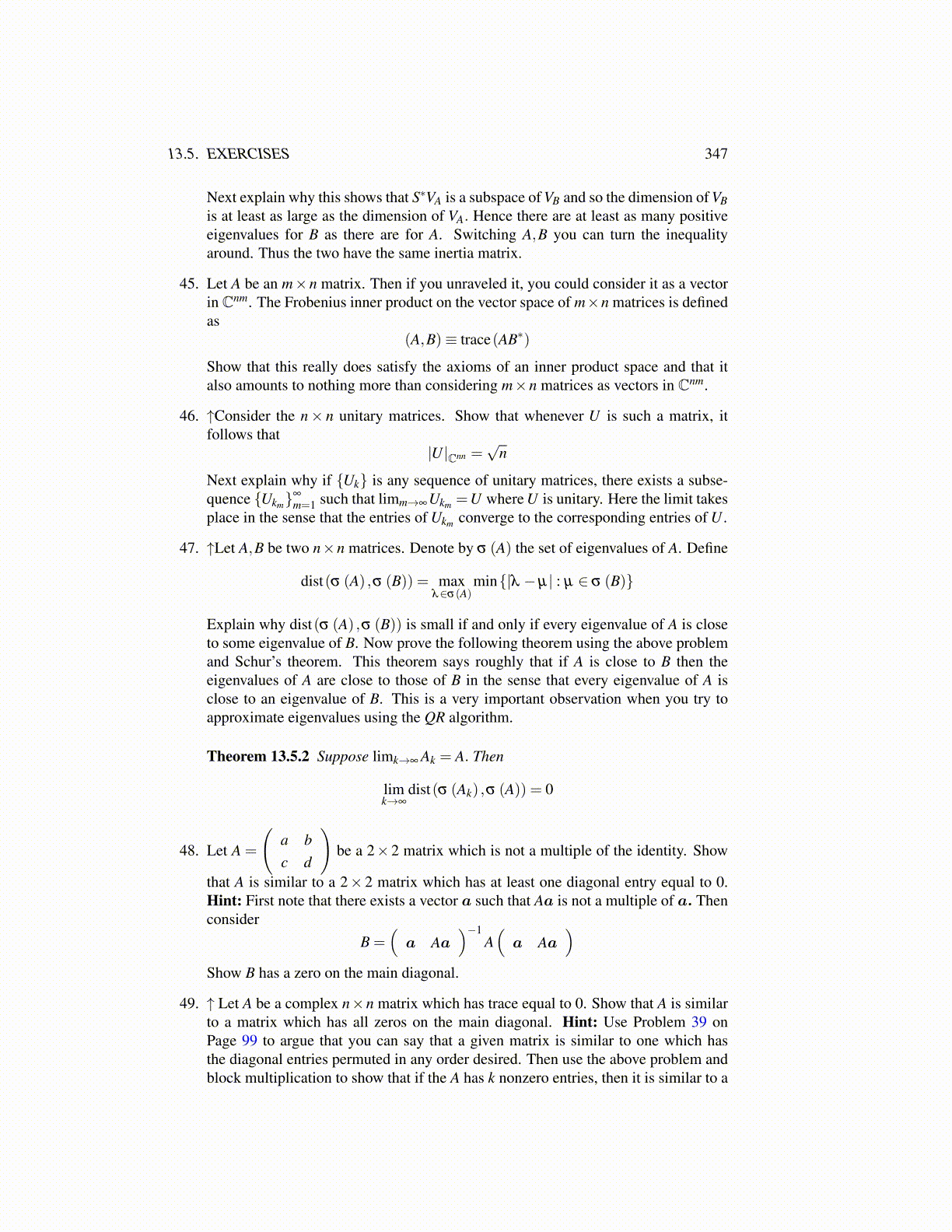
13.5. EXERCISES 347
Next explain why this shows that S∗VA is a subspace of VB and so the dimension of VBis at least as large as the dimension of VA. Hence there are at least as many positiveeigenvalues for B as there are for A. Switching A,B you can turn the inequalityaround. Thus the two have the same inertia matrix.
45. Let A be an m×n matrix. Then if you unraveled it, you could consider it as a vectorin Cnm. The Frobenius inner product on the vector space of m×n matrices is definedas
(A,B)≡ trace(AB∗)
Show that this really does satisfy the axioms of an inner product space and that italso amounts to nothing more than considering m×n matrices as vectors in Cnm.
46. ↑Consider the n× n unitary matrices. Show that whenever U is such a matrix, itfollows that
|U |Cnn =√
n
Next explain why if {Uk} is any sequence of unitary matrices, there exists a subse-quence {Ukm}
∞
m=1 such that limm→∞ Ukm =U where U is unitary. Here the limit takesplace in the sense that the entries of Ukm converge to the corresponding entries of U .
47. ↑Let A,B be two n×n matrices. Denote by σ (A) the set of eigenvalues of A. Define
dist(σ (A) ,σ (B)) = maxλ∈σ(A)
min{|λ −µ| : µ ∈ σ (B)}
Explain why dist(σ (A) ,σ (B)) is small if and only if every eigenvalue of A is closeto some eigenvalue of B. Now prove the following theorem using the above problemand Schur’s theorem. This theorem says roughly that if A is close to B then theeigenvalues of A are close to those of B in the sense that every eigenvalue of A isclose to an eigenvalue of B. This is a very important observation when you try toapproximate eigenvalues using the QR algorithm.
Theorem 13.5.2 Suppose limk→∞ Ak = A. Then
limk→∞
dist(σ (Ak) ,σ (A)) = 0
48. Let A =
(a bc d
)be a 2×2 matrix which is not a multiple of the identity. Show
that A is similar to a 2× 2 matrix which has at least one diagonal entry equal to 0.Hint: First note that there exists a vector a such that Aa is not a multiple of a. Thenconsider
B =(
a Aa)−1
A(
a Aa)
Show B has a zero on the main diagonal.
49. ↑ Let A be a complex n×n matrix which has trace equal to 0. Show that A is similarto a matrix which has all zeros on the main diagonal. Hint: Use Problem 39 onPage 99 to argue that you can say that a given matrix is similar to one which hasthe diagonal entries permuted in any order desired. Then use the above problem andblock multiplication to show that if the A has k nonzero entries, then it is similar to a